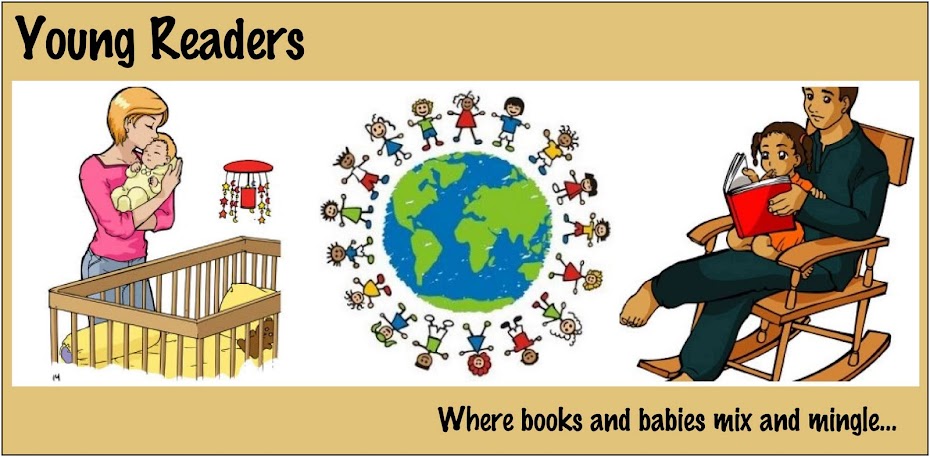Paterson, Katherine. 2008. The Light of the World: The Life of Jesus for Children. Illustrated by Francois Roca.
What I liked about this one? That it begins with the beginning. "The Bible tells us that in the beginning, when God created the heavens and earth, there was nothing but darkness until God said: "Let there be light." And there was light." But it doesn't stop there, it continues, "Many years ago, the prophet Isaiah lived in a dark time for his country. The wise king of Judah had died, and powerful enemies threatened to destroy his tiny land. But Isaiah believed in God's promise that the people who were living in darkness would someday see a great light. This is the story of light coming into the world." I think this is important, significant, that the life of Jesus is grounded in the Old Testament. Even though this is a book for children, it builds on a foundation, a crucial foundation. It is hard to read the New Testament, understand the New Testament, unless one knows at least a few foundational basics from the Old. For one, Jesus, was the child, the man, of prophecy. His coming, his life, his death, had been foretold for hundreds and hundreds of years.
The life of Jesus--from birth to ascension--is told simply and clearly. It's also told in a non-threatening, matter-of-fact way.
It is interesting to see which elements of the story Paterson chooses to focus on, and which elements she skips altogether. However, I don't know that I'd envy her the task of choosing. It's a simple fact--one I understand--that she simply couldn't mention every sermon, every teaching, every parable, every miracle, every confrontation, every event. And I think most of her choices were made to suit her audience. For example, the Slaughter of the Innocents and Jesus' flight into Egypt is passed over. Herod's threatening opposition not making the cut. Also missing from The Light of the World is the story of the twelve-year-old Jesus visiting the temple and astounding those teachers.
The Jesus presented in The Light of the World is wise, kind, compassionate. He's a good man. And he is referred to as the Son of God. But the Jesus presented also lacks confrontation. This Jesus doesn't mention sin. Doesn't mention the fact that all men are sinners and in need of a Savior. In fact, The Light of the World doesn't focus at all--not even a little bit--on the fact that Jesus came into the world to save sinners, to call all men to repent and to follow. Call all men to believe. This Jesus doesn't focus on the hard sayings of Jesus. The difficult bits that might make children and adults squirm a bit. Jesus' teachings to love one another, to be kind, to be generous, to be merciful, to be good, are not at all hard to accept. Everyone likes the treat-others-as-you-want-to-be-treated philosophy.
It's not that anything in Paterson's text is inaccurate. It's just that it is incomplete in many ways. It is far from offensive. Far from abrasive. This one really lacks the ability to rub people the wrong way. This is a very non-threatening Jesus. A Jesus that asks only for people to be good, kind, and loving towards one another. A Jesus that calls for peaceful-loving-happy feelings.
If you're looking for the gospel, you won't find it in The Light of the World. The basics of the gospel--let alone the details of this 'good news'--is not what Paterson has chosen to focus on in her book. Her book is the life of Jesus as separated from the gospel message. Again, it's not that what she says is inaccurate. It's just that it is a very small, very focused fraction of what could have been said.
Is it worth reading? Perhaps. The art by Francois Roca is beautiful. I just can't help thinking that a book that focuses on the life of Jesus should in some way or another explain why he died. This one doesn't. We hear only that he made people angry. Not even the exact reasons why he made people angry. That we're still in the dark about. So we don't know the details of why those men, those leaders wanted Jesus killed. And we don't get the details on why Jesus's death (and I would even go so far as to mention his life and resurrection) matters to us today. All we're told in that respect is that "the light of the world" can continue to shine in believers today when they're good and kind and loving and compassionate and merciful, etc. And it is good to show the love of Jesus, the love of God to others. It is important to minister to everyone--in all the small ways that make a difference--through living a life of love. It is by our actions we are known. So again, it is not that it's inaccurate. Just incomplete. Jesus didn't come to earth so we'd love each and be good neighbors. So we'd all be like Mr. Rogers. That wasn't the purpose. If that was the purpose, then Christians would have never been persecuted then or now or in all the centuries in between.
Still, if a child has parents or grandparents to fill in the missing elements of the story, this one could be worth it.
According to the publisher's site, this one has earned stars in Booklist, Kirkus, and Publishers Weekly. And that is saying something. So whether you love this one or are only luke-warm about it...I think it depends on your expectations and your needs. Obviously, those not judging it from a theological aspect will find it to be of greater quality. Speaking just on literary merits alone, it is well done. And like I said, the artwork, the illustrations, are good--very beautiful, very effective.

No comments:
Post a Comment